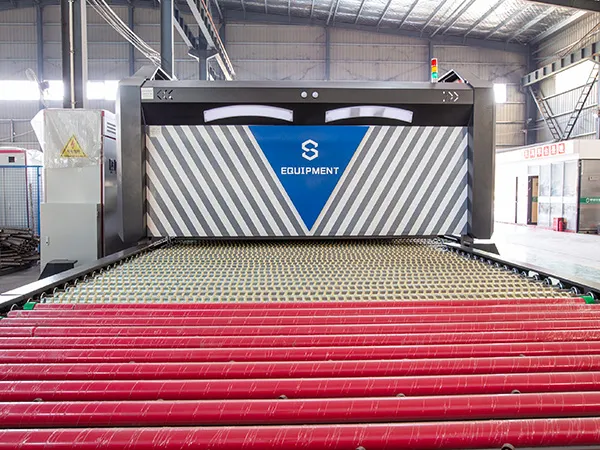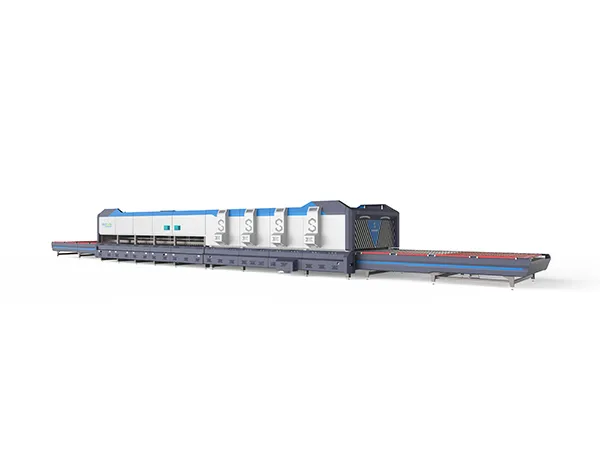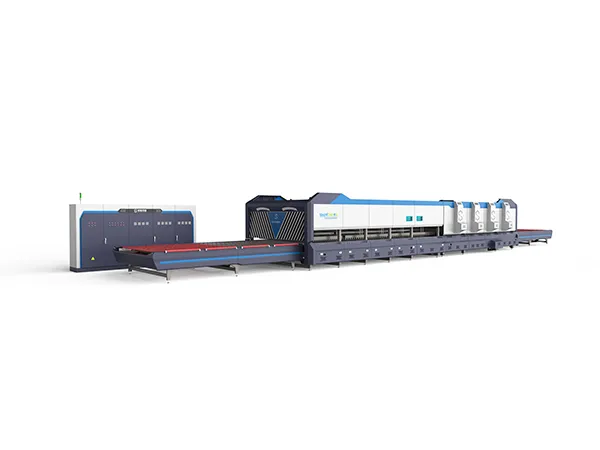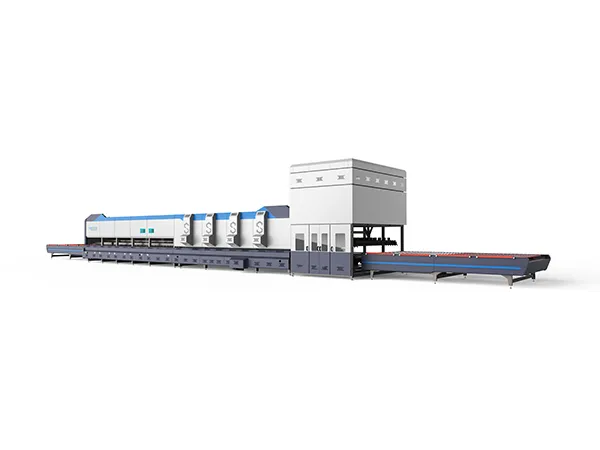Let's get into the nitty-gritty of installing a glass tempering furnace. This is a complex piece of machinery, so a professional approach with meticulous attention to detail is crucial for safety and optimal performance.
Glass Tempering Furnace Installation
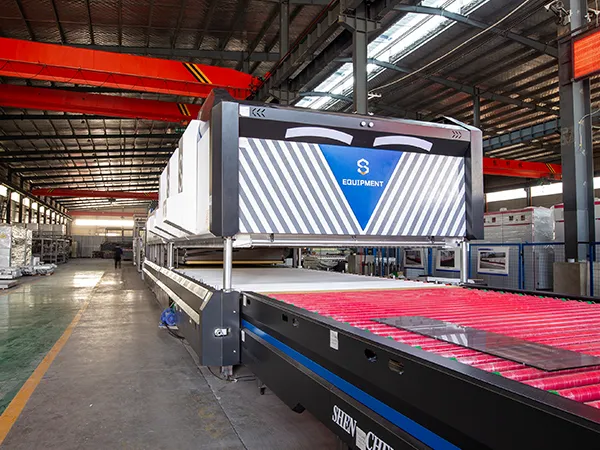
Phase 1: Pre-Installation and Site Preparation
Detailed Site Assessment:
A thorough inspection of the intended installation area is the first step. This involves verifying floor load capacity to support the furnace's weight (which can be substantial).
Measurements of the space are taken to ensure adequate clearance around the furnace for operation, maintenance, and potential future removal or servicing.
Access routes for bringing in the large furnace components are carefully evaluated. This might involve planning for temporary removal of doors or even wall sections.
Utility Infrastructure Check and Preparation:
Electrical Power: The furnace's power requirements (voltage, phase, current) are strictly adhered to. Dedicated electrical lines with appropriate circuit breakers and safety disconnects are installed by qualified electricians.
Gas Supply (if applicable): If the furnace uses gas for heating, the gas line capacity, pressure requirements, and safety shut-off valves are meticulously checked and installed according to local codes.
Compressed Air: Many tempering furnaces rely on compressed air for various functions, such as cooling and operating pneumatic cylinders. The existing compressed air system's capacity and pressure are verified, or a dedicated compressor with appropriate piping is installed.
Water Supply (if applicable): Some advanced cooling systems might require a water supply. The water pressure, flow rate, and drainage system are assessed and prepared.
Ventilation System: Proper ventilation is critical to remove heat and any potential byproducts. The design and installation of the ventilation system must comply with environmental regulations and safety standards.
Foundation Preparation:
Depending on the furnace's size and weight, a reinforced concrete foundation might be necessary to ensure stability and prevent settling. The foundation must be perfectly level.
Anchor bolts or embedded plates for securing the furnace frame are precisely positioned during the foundation pouring process.
Safety Perimeter and Access Control:
Before the furnace arrives, the installation area is clearly marked with safety barriers.
Access to the site is restricted to authorized personnel only.
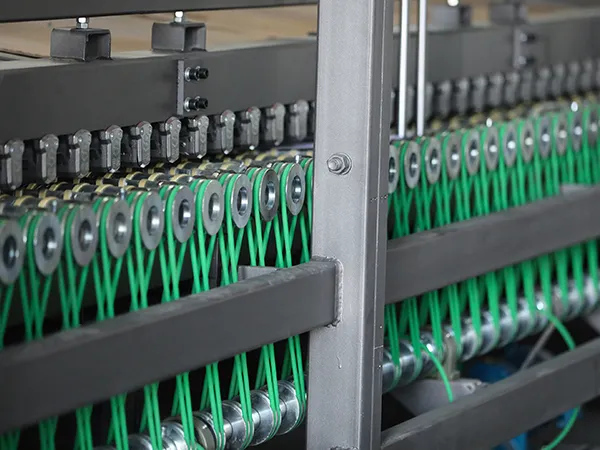
Phase 2: Furnace Delivery and Positioning
Careful Unloading and Handling:
Specialized lifting equipment (cranes, forklifts with sufficient capacity) is used to unload the furnace components from the transport vehicles.
Rigging and lifting procedures are meticulously planned and executed by experienced personnel to prevent damage to the equipment and ensure the safety of the workers.
Precise Positioning:
The furnace base frame is carefully aligned with the anchor bolts or embedded plates on the prepared foundation.
Laser leveling instruments are used to ensure the furnace is perfectly horizontal and vertical, which is crucial for uniform heating and cooling of the glass.
Securing the Base Frame:
Once the base frame is correctly positioned, it is securely bolted to the foundation using high-strength fasteners. Torque specifications are strictly followed.
Phase 3: Furnace Assembly and Component Installation
Chamber Assembly:
The furnace chamber sections are carefully lifted and assembled according to the manufacturer's instructions.
Sealing materials are applied to ensure proper insulation and prevent heat loss.
Heating Element Installation:
Heating elements (electrical resistance wires or gas burners) are installed with precise spacing and connections as per the design specifications.
Electrical connections are made by certified electricians, ensuring proper grounding and insulation. Gas lines are connected and leak-tested by qualified technicians.
Conveyor System Installation:
The roller conveyor system, which transports the glass through the furnace, is installed and aligned. Proper tensioning and smooth operation of the rollers are verified.
Cooling Section Installation (Quench):
The cooling section, which typically involves high-pressure air blowers, is assembled and positioned accurately.
Air nozzles are adjusted to ensure uniform and controlled cooling of the glass surfaces.
Control System Installation:
The main control cabinet, operator interface panels, and all associated sensors and wiring are installed.
Connections between the control system and the furnace components (heating elements, blowers, motors, sensors) are meticulously checked.
Safety System Installation:
Safety interlocks, emergency stop buttons, light curtains, and other safety devices are installed and tested to ensure they function correctly.
Insulation and Cladding:
Thermal insulation materials are installed around the furnace chamber to minimize heat loss and ensure energy efficiency.
Outer cladding panels are fitted to protect the insulation and provide a finished appearance.
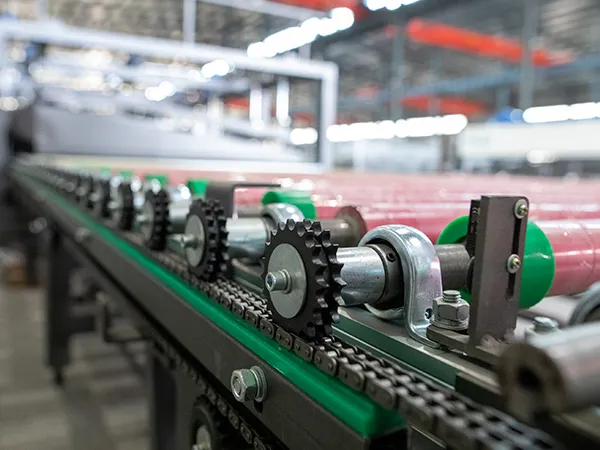
Phase 4: System Integration and Testing
Utility Connections:
Final connections to electrical power, gas, compressed air, and water (if applicable) are made and thoroughly inspected for leaks and proper functioning.
Software Installation and Configuration:
The furnace control software is installed and configured according to the specific requirements and desired operating parameters.
Sensor Calibration and System Testing:
Temperature sensors, pressure sensors, and other feedback devices are calibrated to ensure accurate readings.
Individual components (heating elements, blowers, conveyor motors) are tested for proper operation.
Cold Commissioning:
The entire system is tested without heat to verify the mechanical and electrical functions, including conveyor movement, air flow, and control system responses.
Hot Commissioning and Calibration:
The furnace is gradually brought up to operating temperature.
Temperature profiles, heating rates, and cooling parameters are carefully monitored and adjusted to achieve the desired glass tempering quality.
Calibration of the control system is fine-tuned based on actual performance.
Safety System Verification:
All safety interlocks and emergency stop functions are rigorously tested under operating conditions.
Phase 5: Training and Documentation
Operator Training:
Comprehensive training is provided to the operating personnel on the safe and efficient operation of the furnace, including startup, shutdown, process control, and basic troubleshooting.
Maintenance Training:
Maintenance personnel are trained on routine maintenance procedures, troubleshooting common issues, and safety precautions.
Documentation Handover:
Detailed documentation, including operating manuals, maintenance schedules, electrical schematics, pneumatic diagrams, and safety guidelines, is provided to the customer.
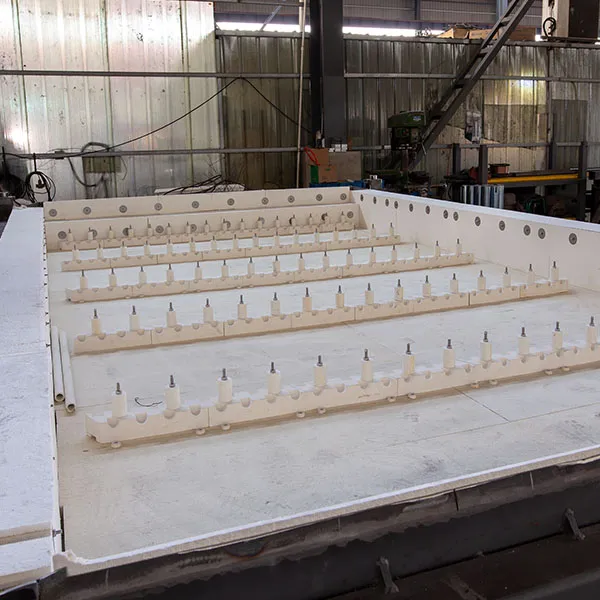
Phase 6: Final Inspection and Handover
Final Inspection:
A thorough final inspection is conducted by both the installation team and the customer to ensure all aspects of the installation meet the agreed-upon specifications and safety standards.
Handover and Acceptance:
Upon successful completion of the final inspection and testing, the furnace is officially handed over to the customer with a signed acceptance document.
This step-by-step guide highlights the complexity and the need for professional expertise in installing a glass tempering furnace. Each step requires specialized knowledge and adherence to safety regulations to ensure a successful and reliable operation.




